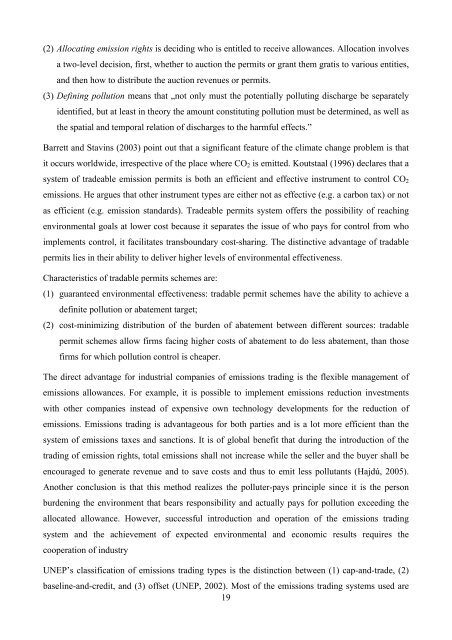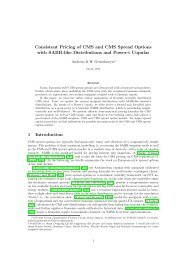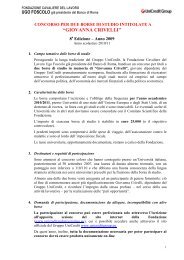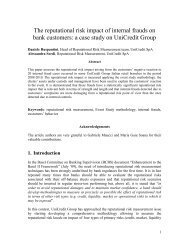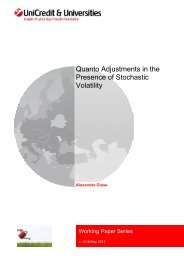Dóra Fazekas Carbon Market Implications for new EU - UniCredit ...
Dóra Fazekas Carbon Market Implications for new EU - UniCredit ...
Dóra Fazekas Carbon Market Implications for new EU - UniCredit ...
Create successful ePaper yourself
Turn your PDF publications into a flip-book with our unique Google optimized e-Paper software.
(2) Allocating emission rights is deciding who is entitled to receive allowances. Allocation involves<br />
a two-level decision, first, whether to auction the permits or grant them gratis to various entities,<br />
and then how to distribute the auction revenues or permits.<br />
(3) Defining pollution means that „not only must the potentially polluting discharge be separately<br />
identified, but at least in theory the amount constituting pollution must be determined, as well as<br />
the spatial and temporal relation of discharges to the harmful effects.”<br />
Barrett and Stavins (2003) point out that a significant feature of the climate change problem is that<br />
it occurs worldwide, irrespective of the place where CO2 is emitted. Koutstaal (1996) declares that a<br />
system of tradeable emission permits is both an efficient and effective instrument to control CO2<br />
emissions. He argues that other instrument types are either not as effective (e.g. a carbon tax) or not<br />
as efficient (e.g. emission standards). Tradeable permits system offers the possibility of reaching<br />
environmental goals at lower cost because it separates the issue of who pays <strong>for</strong> control from who<br />
implements control, it facilitates transboundary cost-sharing. The distinctive advantage of tradable<br />
permits lies in their ability to deliver higher levels of environmental effectiveness.<br />
Characteristics of tradable permits schemes are:<br />
(1) guaranteed environmental effectiveness: tradable permit schemes have the ability to achieve a<br />
definite pollution or abatement target;<br />
(2) cost-minimizing distribution of the burden of abatement between different sources: tradable<br />
permit schemes allow firms facing higher costs of abatement to do less abatement, than those<br />
firms <strong>for</strong> which pollution control is cheaper.<br />
The direct advantage <strong>for</strong> industrial companies of emissions trading is the flexible management of<br />
emissions allowances. For example, it is possible to implement emissions reduction investments<br />
with other companies instead of expensive own technology developments <strong>for</strong> the reduction of<br />
emissions. Emissions trading is advantageous <strong>for</strong> both parties and is a lot more efficient than the<br />
system of emissions taxes and sanctions. It is of global benefit that during the introduction of the<br />
trading of emission rights, total emissions shall not increase while the seller and the buyer shall be<br />
encouraged to generate revenue and to save costs and thus to emit less pollutants (Hajdú, 2005).<br />
Another conclusion is that this method realizes the polluter-pays principle since it is the person<br />
burdening the environment that bears responsibility and actually pays <strong>for</strong> pollution exceeding the<br />
allocated allowance. However, successful introduction and operation of the emissions trading<br />
system and the achievement of expected environmental and economic results requires the<br />
cooperation of industry<br />
UNEP’s classification of emissions trading types is the distinction between (1) cap-and-trade, (2)<br />
baseline-and-credit, and (3) offset (UNEP, 2002). Most of the emissions trading systems used are<br />
19


